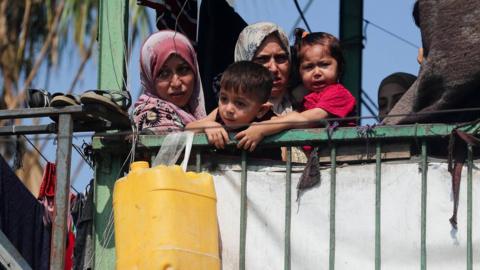In Gaza, some displaced families have found refuge in cemeteries, living among tombstones and skeletons as the conflict between Hamas and Israel rages on. For Maisa Brikah and her children, a dusty cemetery in Khan Younis has been home for five months. Around 30 families now shelter here, turning gravestones into seats and makeshift tables.
Children play in the sand by day, but nighttime brings fear. “When the sun goes down, the children get scared. They are afraid to go out because of the dogs at night, and the dead,” Brikah said.
Gaza’s population of over two million has been heavily displaced after two years of war. While a ceasefire began on October 10, 2025, many cannot return to their homes, which have been destroyed or remain under Israeli control. The cemeteries provide a last resort.
Life among the dead is surreal yet practical. Families hang prayer rugs, cook over open fires, and navigate between graves. Brikah’s neighbor, Ahmad Abu Said, has been in the cemetery since 1991, and his tombstone serves as a reminder of the unease of living here. Still, the alternative is worse: homelessness amid ongoing conflict.
Mohammed Shmah, who fled from northern Gaza, has been living in a cemetery for three months. “I’m a grown man, but I still get scared of the graves at night,” he said. Limited resources exacerbate the struggle; Shmah’s family survived on only 200 shekels ($60) with help from friends.
Even cemeteries are not entirely safe. Bombings have targeted some burial sites during the war, with Israel accusing Hamas of using them for cover, which they say removes the sites’ protection.
For many, the graves offer only temporary sanctuary. Families navigate fear, scarcity, and the constant reminder of loss while making do in a place meant for the dead. In Gaza, life and death coexist in fragile, heartbreaking proximity.

